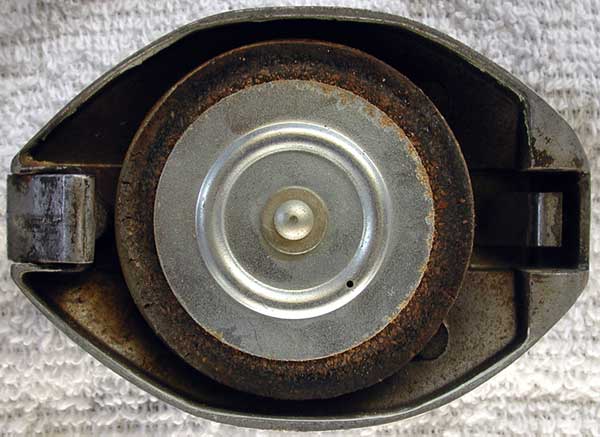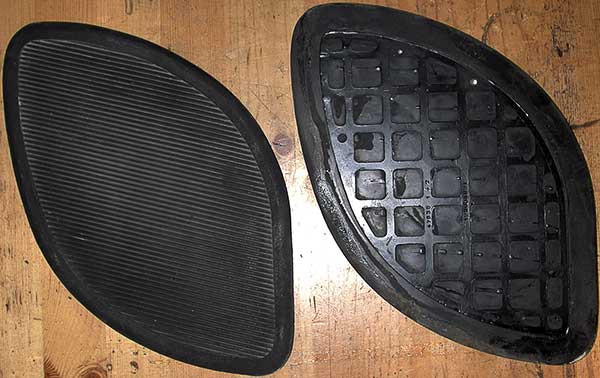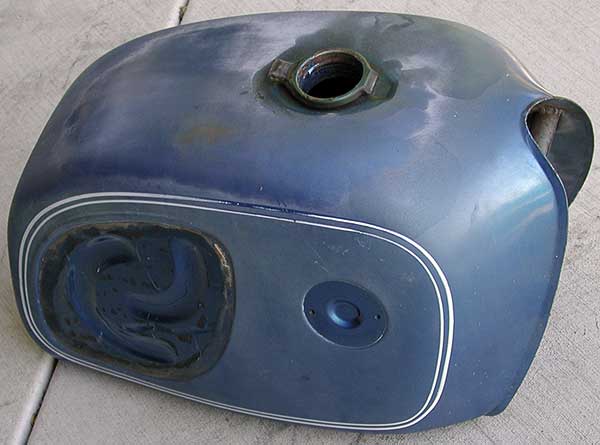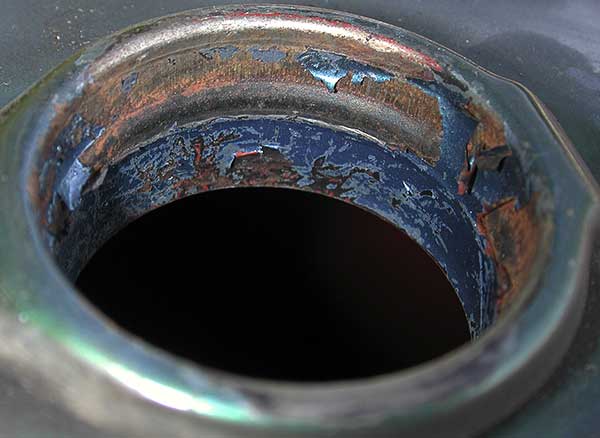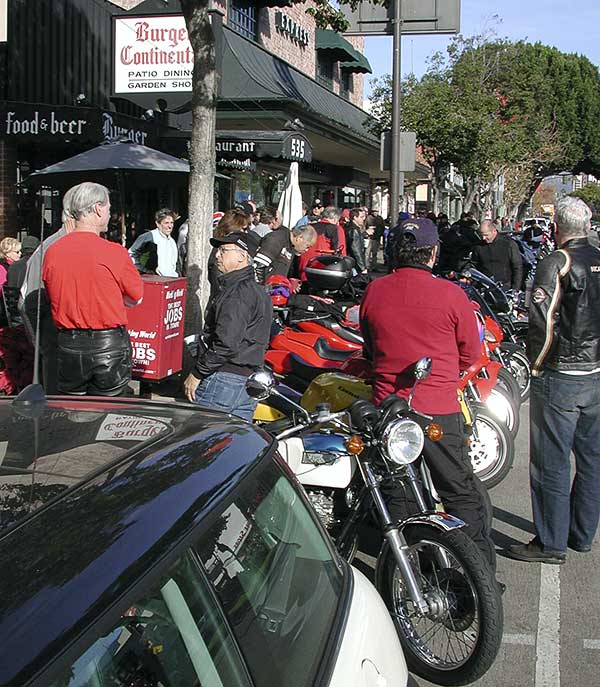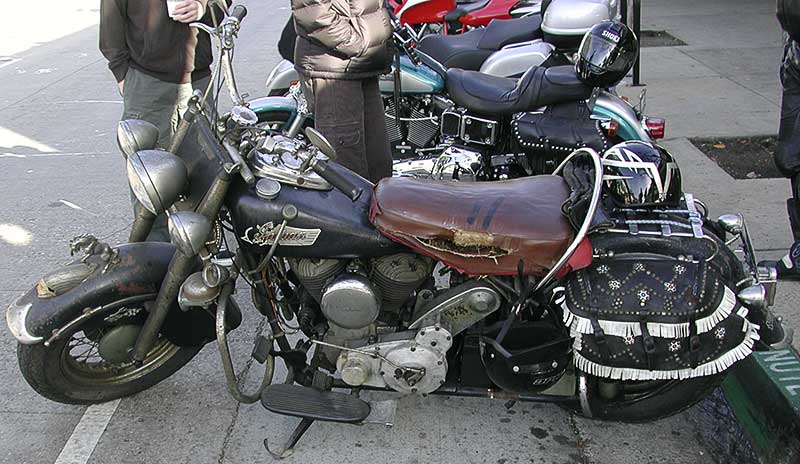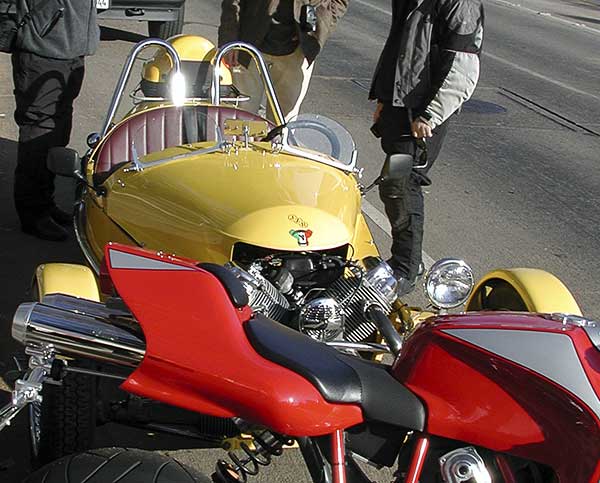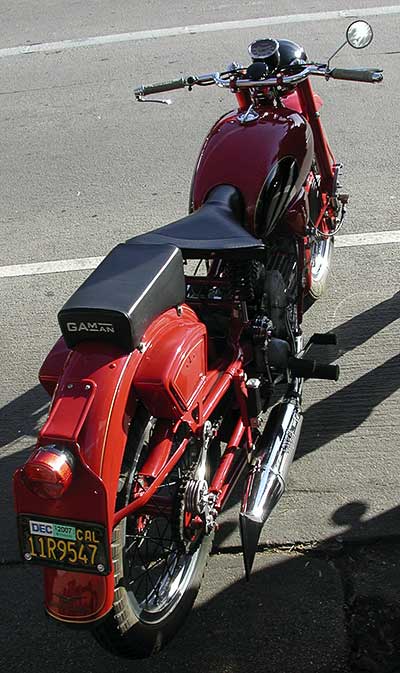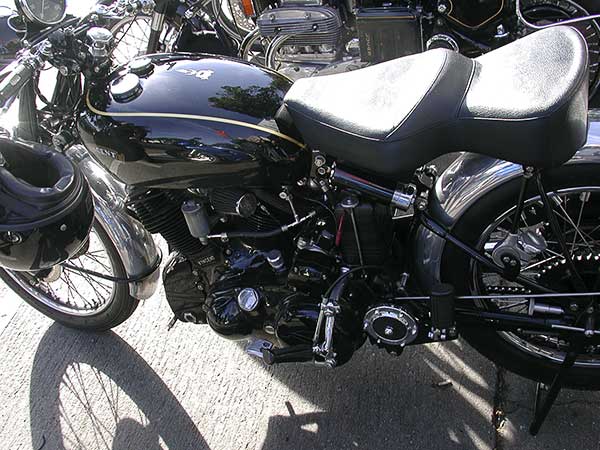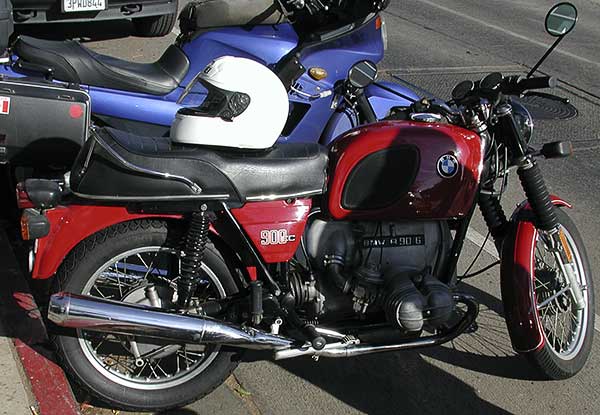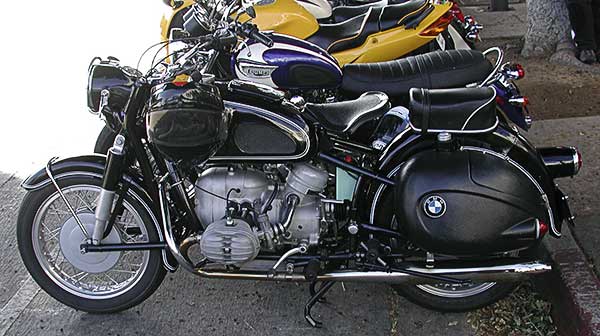Cleaning all the little carburetor bits is a fairly dull task. No pictures to share I’m afraid and I’m nowhere near done. But I can tell you that steel wool is my friend.
Today I also took apart some of the remaining gas tank components and they are worthy of a few pics.
The gas cap is held onto the tank with a press-fit pin very similar to the carb’s float levels. This is the underside of my cap and it looks like the sealing surface could use replacement.
The hang-up is the center piece holding the sealing disk (seems like a stacked pair of rubber disks) in place is like a rivet. I can’t tell exactly how to remove it. Clymer and Haynes have nothing to say on the subject or I missed it. I do recall Joe holding up a brand new rivet in a plastic baggie and saying something about having to drill out the old one. I’m waiting for a call back from him to confirm the technique before doing something that irreversible. Some light prying confirms it is not about to just pop off.
Here are the emblems and their gaskets from the sides of the tank.
They are expensive-looking hefty ceramic-and-metal pieces. I recall dire warnings about making sure the tank curvature is correct and using the gaskets, otherwise cracking and crying will ensue. I’m not sure what the best way to polish up the emblems is yet. They have a slight yellow tinge.
Here are the rubber side panels, with one flipped over to show the waffle-pattern on the backside.
These are just mounted with glue so I heated the tank up in the sun and gently (well, gently for me) peeled them off. They are still flexible and might be renewable if I can get some plasticizer into the outer surfaces. Otherwise, IIRC, replacements cost $20-something each and I’m trying to avoid any expense that is not a cosmetic necessity. I’m staring at enough expenses as it is.
Here is the naked tank. Note this is not the “toaster” tank (metal side-panels) that seems to be more collectible now. What I read is the toaster was not so popular at the time because it is a smaller tank, 4+ gallons instead of 6+ gallons. Note my precision. What am I, Wikipedia?
I didn’t mention it before but, after pulling off the fuel hoses all you have to do to remove the tank is unscrew two wing-nuts at the rear (under the seat) and pull the tank back and up, off a rubber bumper-thingie in front. I haven’t decided if I need to replace that rubber mount or the rubber under the wing-nuts. Their condition is okay now but the effort to get back to them after I reassemble everything means I really should replace the soft bits.
Here is a close-up of the tank’s filler neck.
Yep, we’ve got crud. The factory lines the tank with a red-colored coating but that breaks down over time. I couldn’t get a good focus inside to show you but, yep again, the coating is going away and there were red bits captured in the carb strainers. This brings me to a variety of restoration methods people have used.
I read about putting a load of nails in the tank and shaking it like you’re playing the tambourine at a dance marathon. That doesn’t sound too appealing. Too much work. I also read about putting some lengths of chain in the tank, wrapping the tank in some linens, and tumbling it in a clothes dryer (no heat). Now THAT sounds like a winner. I do still see a couple of issues.
I emptied the tank a couple of days ago and set it in the sun a few times but I still smell gas. Just how smart would it be to tumble gas fumes in a dryer? I’m thinking I could rinse the tank with alcohol and that will evaporate more thoroughly. Any thoughts? Issue number two is what happens when my wife notices me tumbing a gas tank in the dryer with some of her favorite towels? It doesn’t matter which linens I pick, they are likely to be her favorites. I’ll work on a solution.
Lastly, I have to decide on what internal coating to seal the tank with. There are at least three available systems: Kreem, POR-15, and KBS. Those are just the ones I found in a quick search. I have no idea which is better than the others (I’ve heard of Kreem before, and I don’t just mean Eric Clapton). I call them “systems” because they come with multiple fluids to prepare the tank surface before the final coating. That final coating has to be something like an epoxy to withstand gasoline and thermal stresses. The tank should be sealed before any external painting because the sealing chemicals can damage the outside finish very easily.
I’m not entirely sure how to close the filler neck and two petcock openings while I slosh chemicals around inside. You can’t use the actual petcocks because they’ll get gummed up by the sealer if it gets in there. I’m thinking aluminum foil backed up with saran wrap, held on with rubber bands. Any better ideas?
